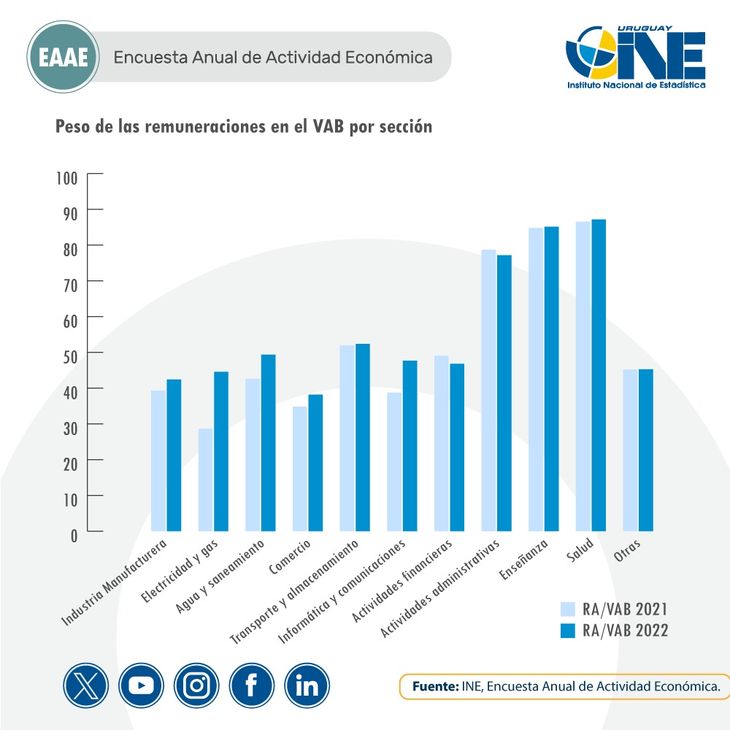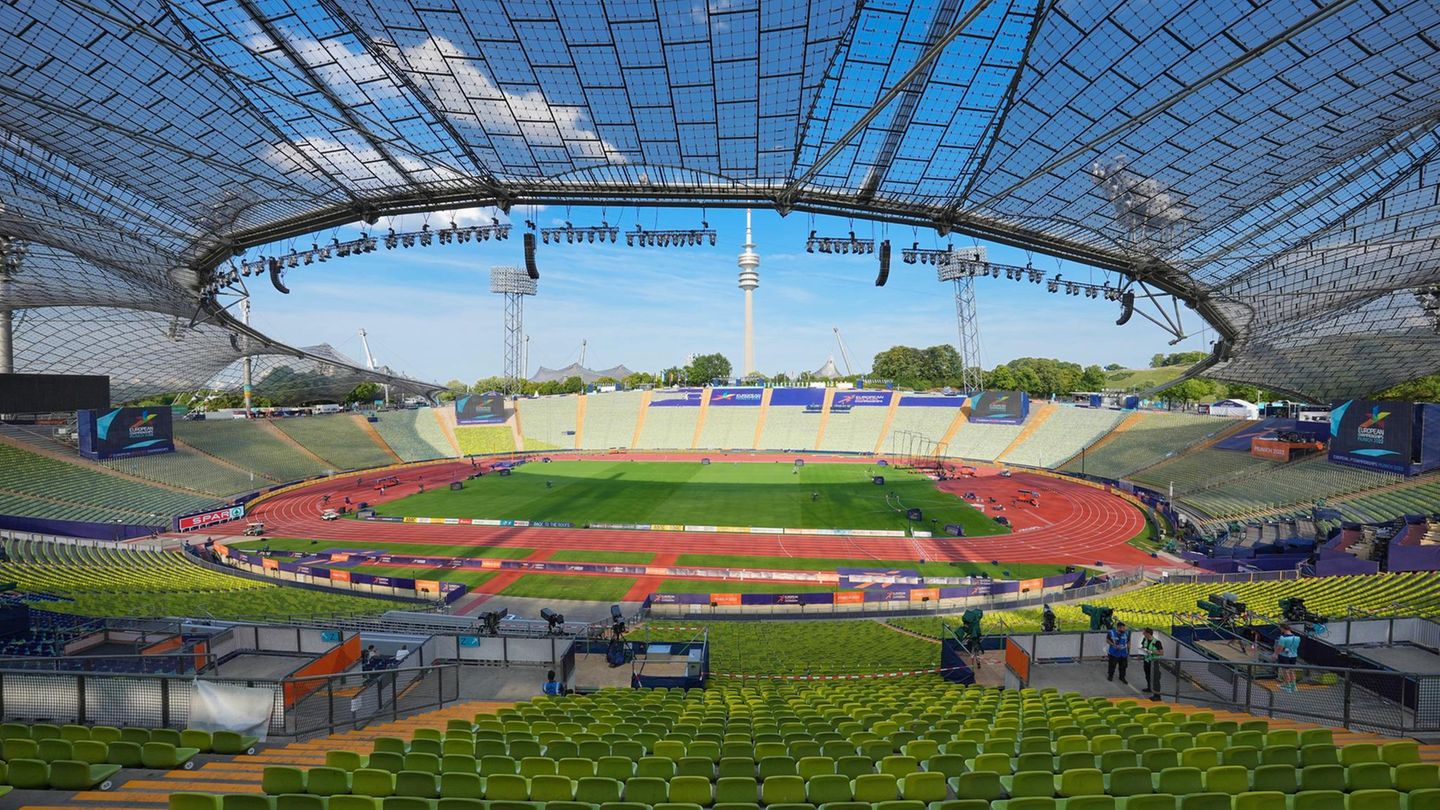He trade and the industry were the two items that contributed the most to the gross value added (GVA) of the country, according to the Annual Survey of Economic Activity of the INE, which was published today with data from 2022.
From the study that analyzes the incidence of groups in the Uruguayan economy, It also follows that the GVA in the gross production value (VBP) stood at 43.2%, with a slight drop compared to the 2021 data, when it reached 46.3%; already in 2020, when it was 44.8%.
On the other hand, the remunerations They exhibited a recovery in their participation within the GVA, reaching 50.4%, higher than the 47.1% in 2021 and 56.8% in 2020.
On the other hand, the net operating surplus (EEN) in the GVA had a fall from 45.6% to 42.6%, while the investment showed a slight decrease, standing at 18.2%, compared to 18.9% in 2021. Finally, the dependent busy staff (POD) showed a significant growth of 4%, with 627,085 workers, compared to 602,975 the previous year.
WhatsApp Image 2023-12-22 at 15.59.14.jpeg
The role of commerce and industry
When evaluating the contribution of each sector, the trade, Despite a year-on-year decrease of 50 basis points, it was the group that contributed the most to the formation of the total gross value added, with 26.9%.
From behind appeared the industry, which grew 40 basis points and reached 21.8%, while the “others” category completed the podium, with 9.6%.
Regarding the variations between 2021 and 2022, the most significant were Electricity and Gas, with a decrease of 38.4%, followed by Transportation and Storage, which showed a drop of 26.4%, and Water and Sanitation, which had a decline of 11.6%.
WhatsApp Image 2023-12-22 at 15.59.15.jpeg

Remunerations and employed personnel
On the other hand, there was an increase in the participation of remunerations in the GVA of almost all the groups, with greater weight for Health (87.2%), Teaching (85.1%) and Administrative activities (77.2%).
Likewise, the most significant year-on-year variations were recorded in Electricity and Gas (55.6%), Information and Communication (23%) and Water and Sanitation (15.8%).
As for the areas with the greatest increase in the number of employed people, they were Trade, with 4,689, Transportation and storage, with 4,379 e Information and communications, with 3,947. It should be noted that, in contrast, activities related to health had a reduction of 4,250 people.
Regarding the variation with respect to the previous year, the most significant were recorded in Electricity and Gas (72.8%), Others (58.8%) and Water and Sanitation (49.3%).
Source: Ambito




